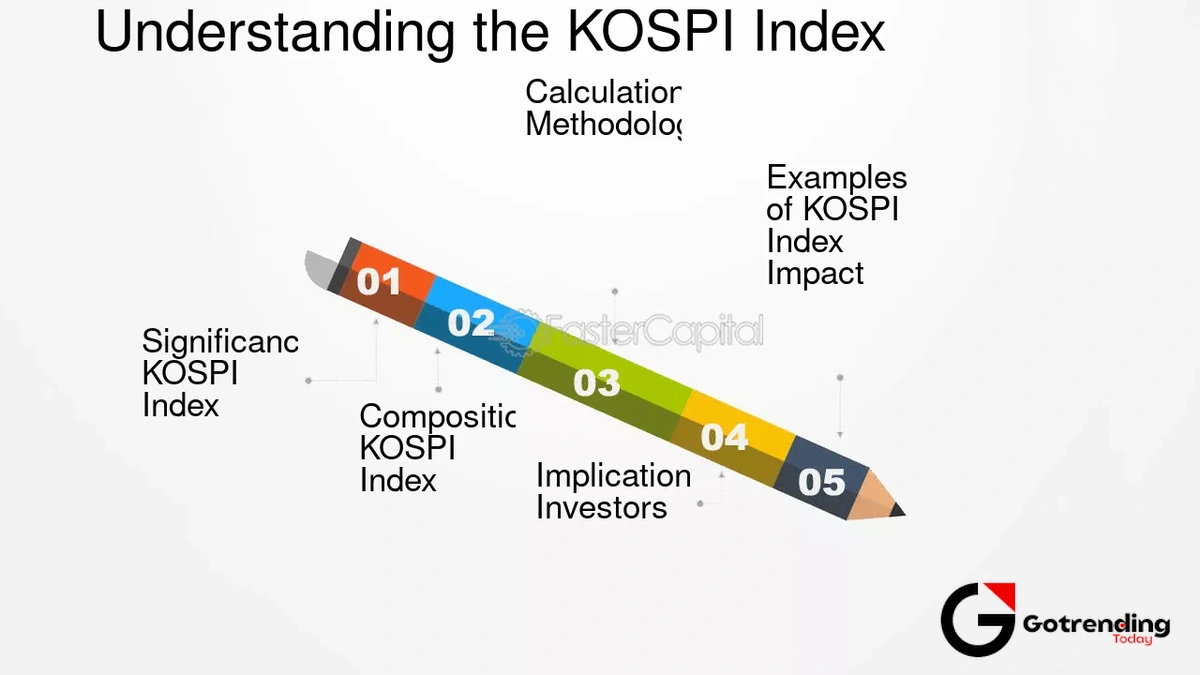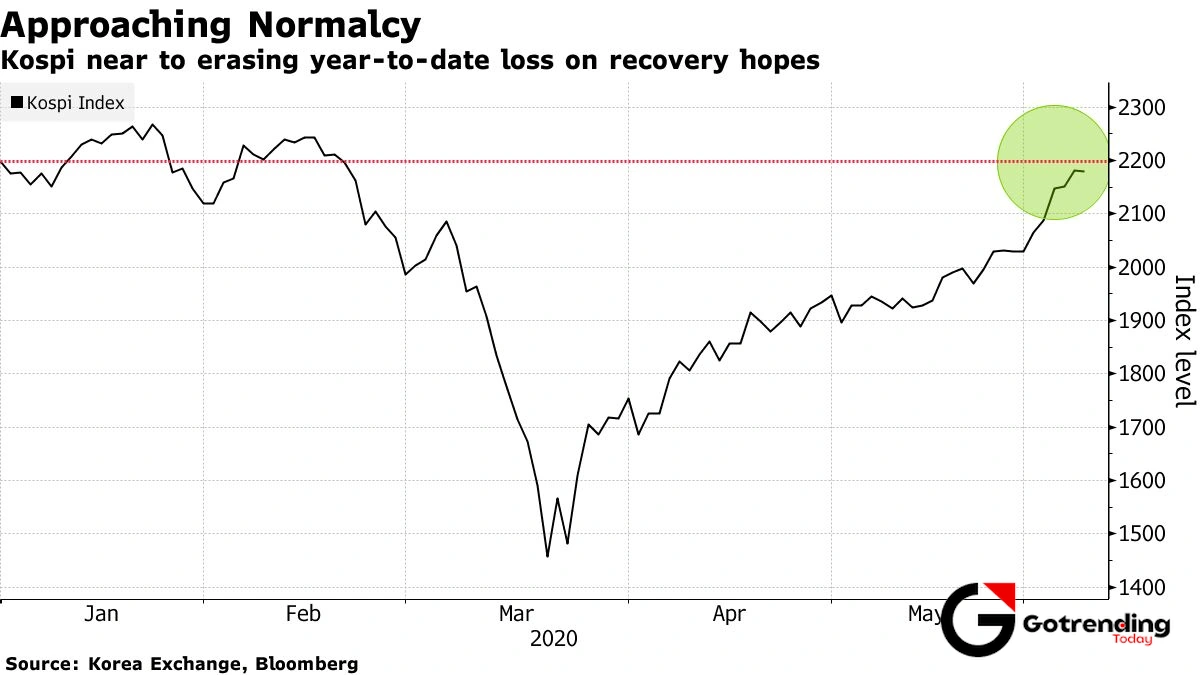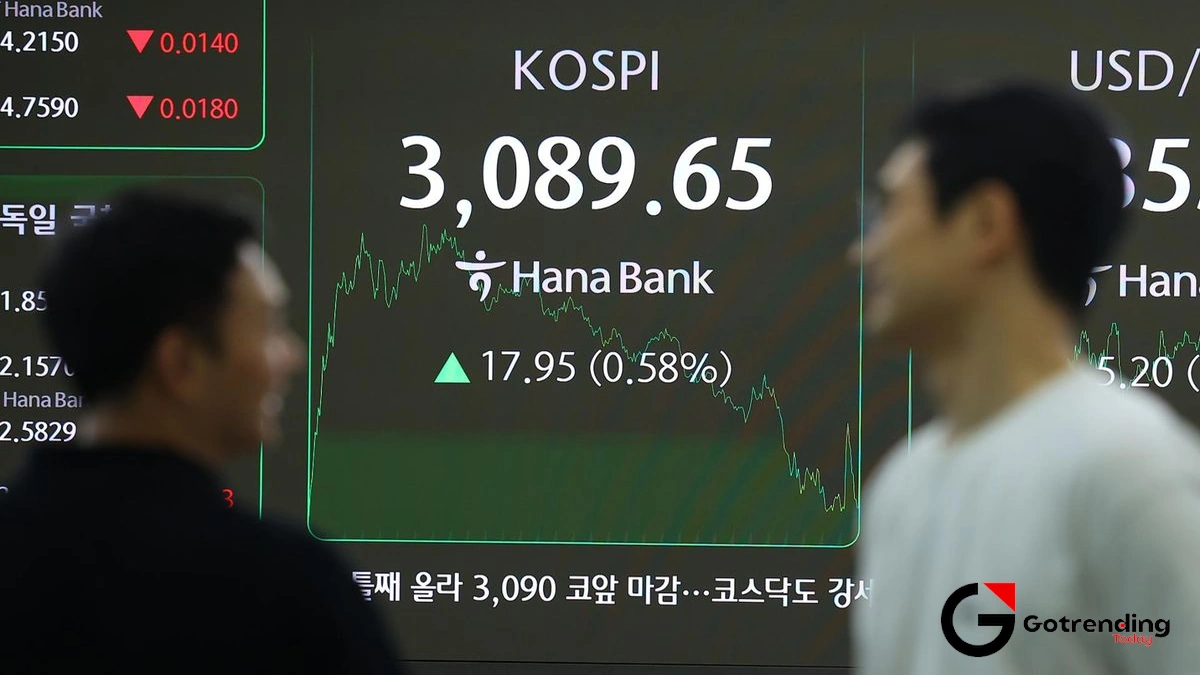Beyond K-Pop and Samsung | Why the KOSPI Index is the Global Signal You’re Probably Ignoring
Let’s have a real chat. You’re probably reading this on a Samsung phone, or maybe you just drove past a shiny new Hyundai. You might have binged ‘Squid Game’ or have a BTS song stuck in your head. South Korea’s cultural footprint in India is massive, vibrant, and undeniable.
But here’s the thing. While we’re consuming the culture, we’re often missing the engine that powers it all. There’s a number that flickers on screens in Seoul every day, a number that has a far more direct, and frankly, more important, impact on the global economy (and your wallet) than the latest K-drama hit. That number is the KOSPI .
At first glance, it just looks like another piece of financial jargon, another stock market index from a faraway country. Easy to ignore, right? But I’m here to tell you that thinking is a mistake. The KOSPI isn’t just South Korea’s Sensex; it’s one of the world’s most critical, and misunderstood, economic barometers. And understanding it gives you an almost unfair advantage in seeing where the world is headed next.
So grab your coffee, pull up a chair. Let’s break down why you, a curious person in India, should absolutely care about the KOSPI .
So, What Exactly is the KOSPI? Let’s Ditch the Jargon
In the simplest terms, the KOSPI is to the South Korea stock market what the Nifty 50 or the Sensex is to India. It’s the Korea Composite Stock Price Index, a list of all the common stocks traded on the Korea Exchange. Think of it as the country’s economic report card.
When you hear news anchors say, “The KOSPI was up 20 points today,” it generally means that the biggest and most influential companies in South Korea had a good day. And when they have a good day… well, that’s where it gets interesting.
But the KOSPI is not just any index. It’s dominated by gigantic, export-oriented industrial and tech behemoths. We’re talking about companies that don’t just sell to Koreans; they sell to everyone, everywhere. This makes the KOSPI a very different beast from our own Nifty 50, which has a healthier mix of domestic-focused banks, IT service companies, and consumer goods firms.
The KOSPI is the heavyweight champion of global manufacturing and technology. And that’s its secret power.
Why the KOSPI is a Secret Bellwether for the Global Economy

This is the core of it. This is why you should care. South Korea is what economists call an “export-led economy.” Its economic health is almost entirely dependent on selling things to other countries. Things like semiconductors, smartphones, cars, ships, and industrial chemicals.
So, what does this actually mean for you? It means the KOSPI index acts as a canary in the global coal mine.
- Early Warning on Tech: The index is heavily weighted towards semiconductor giants like Samsung Electronics and SK Hynix. These companies make the memory chips that go into literally everything—from your laptop and phone to data centers and AI servers. If their sales start to dip (and their stocks fall), it’s a huge red flag that global demand for electronics is slowing down. This signal often appears months before it’s reflected in the earnings of US or European tech companies.
- A Pulse on Global Trade: Companies like Hyundai Heavy Industries are among the world’s largest shipbuilders. If they are getting fewer orders, it means global trade is contracting. Fewer goods are being moved across the oceans. It’s a physical, real-world indicator of a global slowdown.
- Consumer Health Check: When giants like Hyundai Motor and Kia see their stock prices rise, it often means they are selling more cars in major markets like the US, Europe, and even India. It’s a direct measure of whether average people around the world feel confident enough to make big-ticket purchases.
Think about it. Before a slowdown hits the news in the West, it often first appears as a crack in the KOSPI. It’s an early, high-fidelity signal of the health of the global economy because South Korean companies are so deeply embedded in the global supply chain. Tracking it is like getting a sneak peek at the world’s economic report card before it’s officially released.
The ‘Samsung Effect’ | How One Company Bends an Entire Market

What fascinates me about the KOSPI is how utterly dominated it is by one single name: Samsung .
To put it in perspective, Samsung Electronics alone can sometimes account for over 20-25% of the KOSPI’s entire market capitalization. This is insane. For comparison, the most valuable company in India’s Nifty 50, Reliance Industries, typically accounts for around 10-12% of the index’s weight.
This means that on any given day, the direction of the entire South Korean stock market can hinge on one thing: how Samsung is doing. Did they announce a breakthrough in 3-nanometer chip technology? KOSPI likely goes up. Is there news of weak demand for their new Galaxy Fold? KOSPI likely goes down.
This “Samsung Effect” makes the KOSPI a uniquely concentrated bet on the global technology cycle. It’s a specialist. While our Nifty is a well-rounded all-rounder, the KOSPI is the PhD student who knows everything there is to know about one very, very important subject: building the future’s tech hardware. This concentration is both its greatest strength as an indicator and its biggest risk. For more insights on market dynamics, understanding concepts like the grey market premium, which is discussed in this NSDL GMP IPO guide , can be incredibly useful.
KOSPI vs. Nifty 50 | A Tale of Two Asian Tigers

Comparing the KOSPI to our own Nifty 50 is like comparing two different personalities. Both are successful, but they’ve achieved it in very different ways.
The KOSPI is the Manufacturer: It’s built on making physical things. It’s gritty, industrial, and hyper-sensitive to global demand and supply chain issues. Its heroes are Samsung, Hyundai, and LG Chem.
The Nifty 50 is the Service Provider & Domestic Champion: It’s powered by a huge domestic consumption story and a world-class IT services sector. Its heroes are HDFC Bank, Reliance, Infosys, and TCS. While we export software and services, our market’s health is far more linked to the well-being of the Indian consumer and Indian businesses.
Neither is “better” they’re just different. Watching them both gives you a more complete picture of the global economic story. The KOSPI tells you what the world is buying. The Nifty tells you how India is growing. The interplay between the two tells a fascinating story about capital flows and economic priorities. Analyzing individual company performances, such as checking the Sagility share price , adds another layer to this understanding.
Your KOSPI Questions, Answered
Can an Indian retail investor directly invest in the KOSPI?
Directly buying individual stocks on the Korea Exchange is difficult for a retail investor due to regulatory hurdles. However, you can get exposure through certain international mutual funds or ETFs (Exchange Traded Funds) offered by Indian asset management companies that invest in a basket of Asian or global stocks, which often include major KOSPI companies.
What are the main companies in the KOSPI?
Besides the giant Samsung Electronics, other major players include SK Hynix (another memory chip giant), LG Energy Solution (a world leader in EV batteries), Hyundai Motor, Kia, and LG Chem (chemicals). It’s a who’s who of industrial and tech powerhouses.
Why is the KOSPI so sensitive to the tech industry?
Because of its heavy concentration in semiconductor manufacturing. Chips are a cyclical industry they go through massive booms and busts. Since these companies make up such a large portion of the index, their fortunes dictate the KOSPI’s movement, making it a proxy for the global tech hardware cycle.
Is the KOSPI related to the KOSDAQ?
Yes, they are sister indices. Think of it like our BSE and NSE having the Sensex and Nifty. The KOSPI is the main board with the big, established giants. The KOSDAQ, run by the same Korea Exchange , is the equivalent of the Nasdaq in the US it’s home to smaller, tech-focused, and growth-oriented companies.
How does the Korean Won (KRW) affect the KOSPI?
It’s a huge factor. Since KOSPI companies are massive exporters, a weaker Won is generally good for them. It makes their products (like a Hyundai car or a Samsung TV) cheaper for foreign buyers, boosting sales and profits. Conversely, a strong Won can hurt their competitiveness and weigh on the index.
So, Should You Really Care?
Yes. Absolutely, yes.
You don’t need to become an expert day-trader of the South Korea stock market . But simply knowing what the KOSPI is and paying attention to its general direction gives you a richer, more nuanced understanding of the world.
When you see the KOSPI take a dive, you won’t just see a random number. You’ll understand it could be an early tremor of a global tech slowdown. When you see it soar, you’ll know the engines of global trade are firing on all cylinders.
It’s about connecting the dots. The phone in your hand, the car on the road, the very chips that power our digital world their story is written every day in the fluctuations of the KOSPI. Ignoring it isn’t just ignoring a stock index; it’s ignoring one of the most powerful signals about our deeply interconnected global future.












